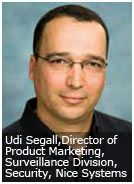Video Issues
Surveillance keeps an eye out for events. If something does happen, footage has to be pulled up fast so authorities can respond in time. “The main challenge in monitoring bus and metro systems is accessing the video in real time in case of an emergency or an accident,” Malesci said.
However, the reality is mobile video is plagued with lag. While some transit authorities include real-time streaming, most footage resides locally on mobile DVRs . Some solutions can record for up to two weeks, which is ideal as events may not be reported to authorities right away, Tseng said.
While reliable security comes at a price, it is no longer an option. “Before it was a luxury, and now it's a standard in the way publictransit authorities are running their businesses,” Szmania said. “Frankly, the payoff in terms of accident claims outweighs the cost of the system.”
 Wireless transmission is ideal for its flexibility, but is sensitive to weather changes and transmission drops. “Dry weather will affect humidity and transmission,” Tseng said. “We recommend using IP Internet with 3-G to send video.”
Wireless transmission is ideal for its flexibility, but is sensitive to weather changes and transmission drops. “Dry weather will affect humidity and transmission,” Tseng said. “We recommend using IP Internet with 3-G to send video.”
Chinese buses typically stream video over 3-G networks, making connectivity a priority, said Yingming Li, Product Director of Topshine Technology. Equipment with GPS enables route tracking for buses and can also monitor driver speeds.
Wireless video mesh is another option , which is less affected by environmental concerns. “Data rates, speed of vehicles, line of sight and hand-off times need to be taken into consideration to guarantee that the network will match the expectations of the customer,” Malesci said.
 Rugged Design Mobile equipment withstands a great deal more vibration compared to fixed systems. For the Los Angeles Metropolitan Transportation Authority, it specified vibrationresistance as a feature for more than 700 mini domes installed inside its subway carriages, Wilson said. The driver's cab cameras also used vibration-resistant mounting, coupled with day/night functionality.
Rugged Design Mobile equipment withstands a great deal more vibration compared to fixed systems. For the Los Angeles Metropolitan Transportation Authority, it specified vibrationresistance as a feature for more than 700 mini domes installed inside its subway carriages, Wilson said. The driver's cab cameras also used vibration-resistant mounting, coupled with day/night functionality.
Video equipment onboard trains and buses have to operate for long periods of time, making heat dissipation an issue. This is further complicated by cramped spaces onboard. “Dustproofing is important, since the recorder is placed under the driver's seat or in the back of the bus,” Tseng said. “Dust will affect recording and heat, so good seaming is critical.”
Running public transit presents a challenge, particularly with so much equipment. In our next article, we explore the people issues in public transit. While technology aids operations, keeping everyone in the loop and the demands of different stakeholders requires effective communications.